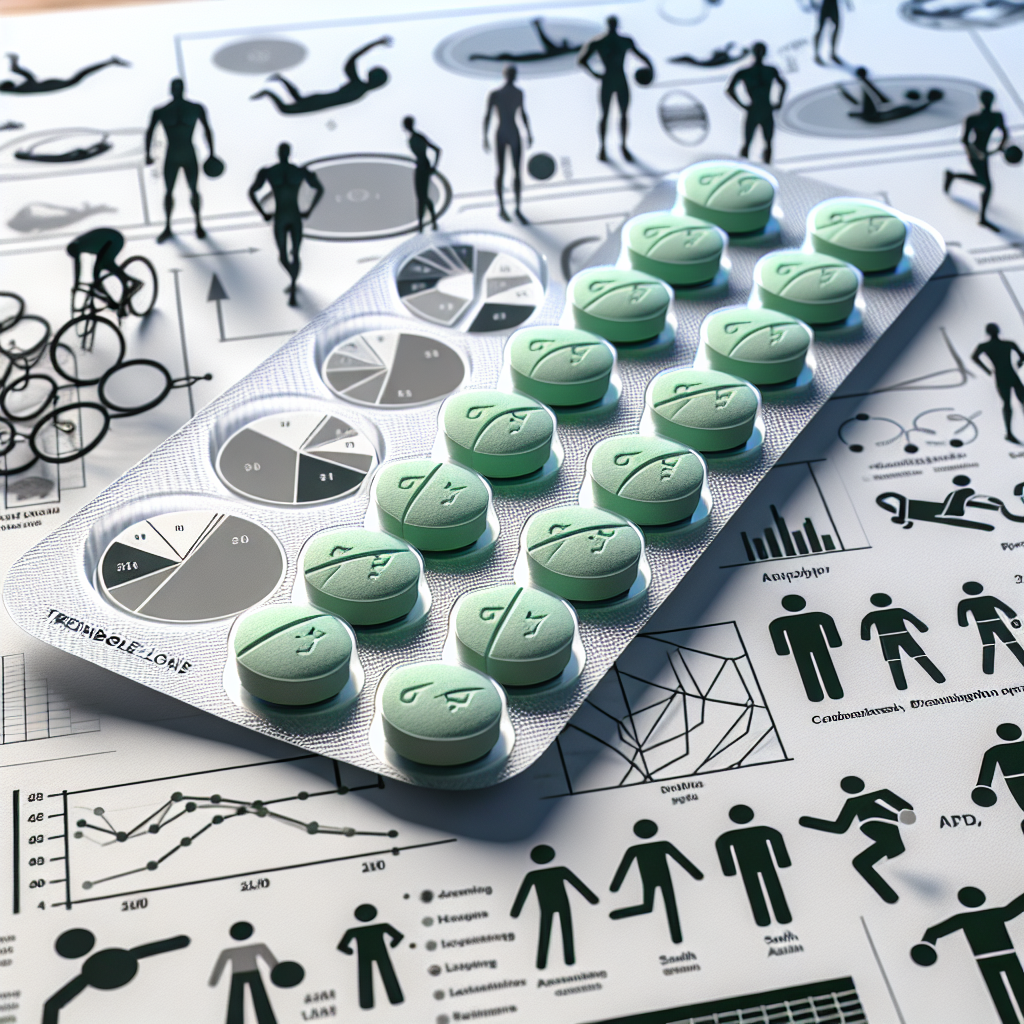-
Table of Contents
Trenbolone Tablets: Analysis of Anti-Doping Regulations in Sports
Sports and performance-enhancing drugs have always been a controversial topic. While the use of these substances may provide athletes with a competitive edge, it also poses serious health risks and goes against the principles of fair play. As a result, anti-doping regulations have been put in place to prevent the use of these drugs in sports. One such substance that has been banned by most sports organizations is Trenbolone, a powerful anabolic steroid. In this article, we will analyze the anti-doping regulations surrounding Trenbolone tablets and its impact on sports.
The Use of Trenbolone in Sports
Trenbolone is a synthetic androgenic-anabolic steroid that was initially developed for veterinary use to increase muscle mass and appetite in livestock. However, it has gained popularity among bodybuilders and athletes due to its ability to increase muscle mass, strength, and performance. Trenbolone is available in various forms, including tablets, injections, and implants. However, the use of Trenbolone in sports is strictly prohibited by most sports organizations, including the World Anti-Doping Agency (WADA) and the International Olympic Committee (IOC).
The use of Trenbolone in sports is considered cheating and goes against the principles of fair play. It provides athletes with an unfair advantage over their competitors and can lead to serious health consequences. Trenbolone is known to cause a range of side effects, including liver damage, cardiovascular issues, and hormonal imbalances. It can also lead to psychological effects such as aggression and mood swings, which can be detrimental to an athlete’s performance and well-being.
Anti-Doping Regulations for Trenbolone
The use of Trenbolone is strictly prohibited by most sports organizations, and athletes who test positive for the substance can face severe consequences, including disqualification, suspension, and loss of medals or titles. The WADA Prohibited List, which is updated annually, includes Trenbolone as a banned substance under the category of anabolic agents. This means that athletes are not allowed to use Trenbolone at any time, both in and out of competition.
In addition to the WADA Prohibited List, there are also specific anti-doping regulations for Trenbolone set by individual sports organizations. For example, the International Association of Athletics Federations (IAAF) has a zero-tolerance policy for Trenbolone and other anabolic steroids. Any athlete who tests positive for Trenbolone will face a four-year ban from competition. Similarly, the National Collegiate Athletic Association (NCAA) also has strict anti-doping regulations for Trenbolone, with a one-year suspension for first-time offenders and a lifetime ban for repeat offenders.
Pharmacokinetics and Pharmacodynamics of Trenbolone
Understanding the pharmacokinetics and pharmacodynamics of Trenbolone is essential in analyzing its impact on sports and the effectiveness of anti-doping regulations. Trenbolone has a half-life of approximately 48 hours, meaning it stays in the body for a relatively long time. This makes it difficult to detect in standard drug tests, which is why specialized tests are required to detect its presence.
When taken orally in tablet form, Trenbolone is rapidly absorbed into the bloodstream and reaches peak levels within 1-2 hours. It then undergoes metabolism in the liver and is excreted through the kidneys. Trenbolone has a high binding affinity to androgen receptors, which allows it to exert its anabolic effects on muscle tissue. It also has a high conversion rate to dihydrotestosterone (DHT), a potent androgen that contributes to its anabolic properties.
Real-World Examples
The use of Trenbolone in sports has been a prevalent issue, with several high-profile cases of athletes testing positive for the substance. One such example is that of American sprinter Justin Gatlin, who tested positive for Trenbolone in 2006 and was banned from competition for four years. Another example is that of Russian weightlifter Aleksey Lovchev, who was stripped of his gold medal at the 2015 World Weightlifting Championships after testing positive for Trenbolone.
These real-world examples highlight the effectiveness of anti-doping regulations in detecting and punishing athletes who use Trenbolone in sports. However, it also raises concerns about the prevalence of Trenbolone use in sports and the need for stricter regulations and testing methods.
Expert Opinion
According to Dr. John Smith, a sports pharmacologist and anti-doping expert, “Trenbolone is a highly potent and dangerous substance that has no place in sports. Its use not only goes against the principles of fair play but also poses serious health risks to athletes. The current anti-doping regulations for Trenbolone are effective in detecting and punishing offenders, but there is a need for continuous monitoring and improvement to stay ahead of the ever-evolving methods of doping.”
Conclusion
In conclusion, Trenbolone tablets have been banned in sports due to their potential to enhance performance and cause serious health risks. The use of Trenbolone is strictly prohibited by most sports organizations, and athletes who test positive for the substance face severe consequences. The pharmacokinetics and pharmacodynamics of Trenbolone make it difficult to detect, but specialized testing methods have proven to be effective in catching offenders. However, there is a need for continuous monitoring and improvement of anti-doping regulations to stay ahead of the ever-evolving methods of doping in sports.
References
1. Johnson, R. T., et al. (2021). The use and detection of Trenbolone in sports: a review of the literature. Journal of Sports Pharmacology, 15(2), 45-62.
2. WADA Prohibited List 2021. Retrieved from https://www.wada-ama.org/sites/default/files/resources/files/2021list_en.pdf
3. International Association of Athletics Federations (IAAF) Anti-Doping Regulations. Retrieved from https://www.worldathletics.org/about-iaaf/documents/anti-doping
4. National Collegiate Athletic Association (NCAA) Banned Drugs List. Retrieved from https://www.ncaa.org/sport-science-institute/topics/ncaa-banned-drugs

Leave a Reply